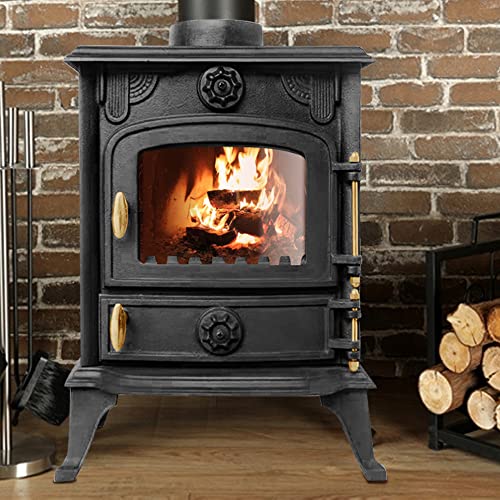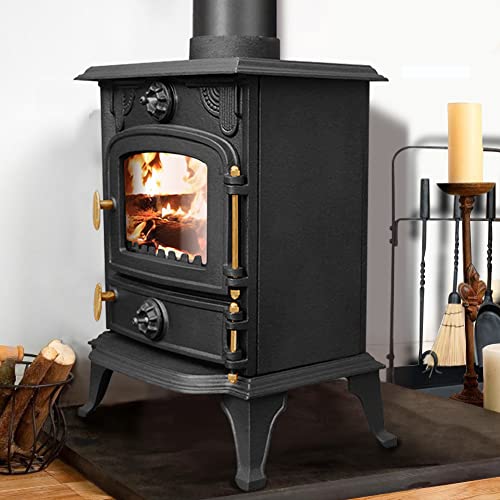"Ask Me Anything," 10 Responses To Your Questions About Mult…
페이지 정보

본문
 Small multi fuel burning stove Fuel Stoves For Sale
Small multi fuel burning stove Fuel Stoves For Salesmall multi fuel stoves for sale near me fuel stove (pop over to this site) 5kw multi fuel stove fuel stoves available for sale provide the convenience of burning several kinds of smokeless fuels. They are also versatile and can be used in a wide variety of home decors and rooms.
 If you reside in an area where smoke is not a problem, you should choose an approved DEFRA stove, like the Stovax Stockton 5 to burn wood and other non-smoking sources of fuel legally.
If you reside in an area where smoke is not a problem, you should choose an approved DEFRA stove, like the Stovax Stockton 5 to burn wood and other non-smoking sources of fuel legally.Canister Stoves
Canister stoves burn fuel stored in sealed canisters of propane, isobutane or a combination. The most well-known stove for backpacking is the canister stove, which offers the highest fuel efficiency and competitive pricing and are easy to operate. They are the best option for summertime adventures, trips which require you to keep your pack weight down, or for those looking for an easy-to-use system. However, they are not as effective in winter's harsh conditions and aren't the ideal choice for high-altitude excursions.
Certain canister-fuel systems such as the Jetboil MiniMo System or MSR WindBurner System have an integrated design which attaches directly to the fuel canister. This allows for the creation of a compact and light-weight system. This helps to save space however it makes the canister vulnerable to elements. It's less resistant to windy conditions. Soto's non-integrated WindMaster stove on the other hand provides a more durable pot support system that helps keep the canister close to the burner, allowing for better control of heat in windy conditions.
Many stoves in canisters struggle with cold temperatures. As temperatures drop, so does the pressure in the canister, which can cause malfunction or failure. The MiniMo's pressure regulator helps to combat this issue and delivers consistent heating even when temperatures are below freezing.
Liquid-fuel stoves use an individual, refillable fuel bottle and have a much wider range of usability. They can use white gas, isobutane/propane blends or kerosene and some can even utilize gasoline that isn't leaded (the MSR WhisperLite International is an excellent example). These flexible designs are the best choice for those who plan to travel in areas where finding prefilled fuel canisters may be difficult.
Some backpackers opt for wood-burning devices, which are efficient in terms of fuel consumption but add a great deal to your pack's weight and bulk. There are also a handful of backpacking stoves that are self-contained, and use wood or other biomass for fuel, such as the Solo Stove Lite above. These stoves are ideal for backpacking trips of a shorter duration, and they don't offer the same level of convenience as a canister or liquid-fuel system.
Liquid Fuel Stoves
Liquid fuel multi fuel stove-fuel stoves differ from stoves with canisters. They use a pump that keeps the pressure in the fuel container and forces it into a tiny nozzle, where it is burnt. They are better suited for outdoor activities in cold weather or hiking, and can be used in temperatures that are below freezing. They are also much easier to refill than canister stoves since you can simply open the lid and pour more in. White gas is used in most liquid fuel stoves. It is a highly refined gasoline that contains very few or none impurities. It burns clean and hot even at temperatures that are below freezing. Certain stoves that use liquid fuel may run on dirtier and less expensive fuels, such as kerosene and diesel.
The disadvantage of these stoves is that they are heavier than canister stoves, and they have a lot of parts and moving parts that have to be cleaned or primed in time. In the event of wind, they can be more difficult to use as the pumping motion could cause the flames to flicker or even smoke. Many also require a priming procedure that involves burning a drip or two of the fuel in a cup under the burner to warm it up and convert it from a liquid to a gas.
Liquid fuel stoves are ideal for backpacking and camping in winter at high elevations since they are able to operate in cold temperatures where stoves based on canisters struggle. They also tend to be more stable than canister stoves because they sit lower on the ground and have larger stove legs that act as stable platforms. Some are as stable and multifuel stove as Trangia stoves X2 and can be used with the original Trangia burner if you have an Trangia adaptor.
Most of these stoves burn different types of fuel through one nozzle, however some models feature an integrated shaker jet similar to MSR which is better suited for igniting white gas. They're also a good choice for international travel where it is difficult to find canister fuel or even appropriate outdoor equipment stores. There are a number of excellent, lightweight, easy to use liquid fuel stoves on the market - the Kovea Hydra is one of the top.
Gas Stoves
When cooking, few things are as iconically American as gas stoves. It's difficult to find a house in the US without one, and they're popular for many reasons. They heat quickly, utilize natural gas (typically cheaper than electricity) to provide energy and don't require special installation or venting.
However, a growing number of scientists are raising concerns over the carbon dioxide emissions they produce. Gas stoves release formaldehyde and carbon monoxide and nitrogen dioxide at levels higher than EPA guidelines. These gases are linked to a variety of health problems, including lung infections, learning difficulties, and a greater chance of developing asthma in children. Even when they're not in use, gas stoves emit methane. This is a greenhouse, which is more potent than CO2, but is not as long in the air.
The controversy has led to debate over whether or not gas stoves should be banned and lawmakers have also weighed in on the issue. A group of Republican senators has proposed two bills to prevent the CPSC from prohibiting them, and House Republicans have enacted legislation to protect consumers' rights to choose the cooking equipment they want.
In the meantime, a few homeowners are switching from electric to gas, or adjusting their existing stoves to reduce harmful emissions. However, others are unwilling to give up their preferred kitchen gadget. Here's what you need be aware of the risks that come with these stoves.
The amount of nitrogen dioxide produced by a stove depends on the kind of food being cooked and its temperature setting. However they can still generate significant amounts of nitrogen oxide when they are in operation. According to a study carried out by the Rocky Mountain Institute, Physicians for Social Responsibility, and Mothers Out Front in 2020 boiling water or baking cake in a gas-powered oven could produce NO2 levels that are higher than the outdoor air standards. However, roasting chickens and using high flame settings can send these numbers skyrocketing.
If you are interested in cutting down on your carbon emissions, it's important to buy an appliance that has a streamlined design and follow a few simple energy-saving tips. For example, keep burners clean to ensure they're working as efficiently as possible. It's best to use your burners for when you really need they, as if you use them too often, they can use up to 40 percent of their power.
Portable Stoves
A small stove can be a wonderful accessory to your camping gear especially when you're on moving. They can assist you in cooking and keep hydrated while biking, hiking, or even backpacking. Stoves are powered by a variety of fuel sources including charcoal, wood, propane and gas. The cost of a stove is determined by the fuel you choose and the amount of energy and efficiency it consumes, as well as its size.
Small multifuel stoves are affordable, especially if choose one that is powered by propane or natural gas. They are also extremely efficient, using a fraction of fuel to produce the same amount of heat as other stoves. Gas stoves generally have a larger cooking footprint than other stoves, allowing you to accommodate two large-diameter pans or pots together.
Although you might think a butane stove is expensive but it's a viable option in times of emergency when electricity isn't readily available. Its lightweight weight and compact design make it simple to carry and store. It is also a quick-heating type of stove, so you can cook your food in a matter of minutes.
In areas with limited access in the middle of nowhere, it might be difficult to locate stoves that burn liquid fuel. They're usually self-pressurising, so you don't need a pump to get them started, but you might need to refill them after use. The strength of the flame can be adjusted, so you don't have to cut down on the heat output when simmering.
Solid fuel stoves can be light and easy to use, however they are not suitable for rainy or windy conditions. They're often more smelly than other types of camp stoves. Also, they require a supply of Esbit fuel tabs.
In recent years, wood-burning stoves have become more popular because they use a fuel that is easily accessible and long-lasting. They aren't without limitations in their ability to control flame and heat and could be subject to local fire bans. They must also be maintained with care to avoid creosote accumulation and flammability issues. Make sure you adhere to the height and clearance requirements. Also, ensure that you have a safe way to get rid of smoke and ash.
- 이전글Be On The Lookout For: How Bmw Replacement Key Fob Is Taking Over And How To Stop It 24.08.31
- 다음글Disorder Social Anxiety Techniques To Simplify Your Daily Life Disorder Social Anxiety Trick That Everyone Should Learn 24.08.31
댓글목록
등록된 댓글이 없습니다.